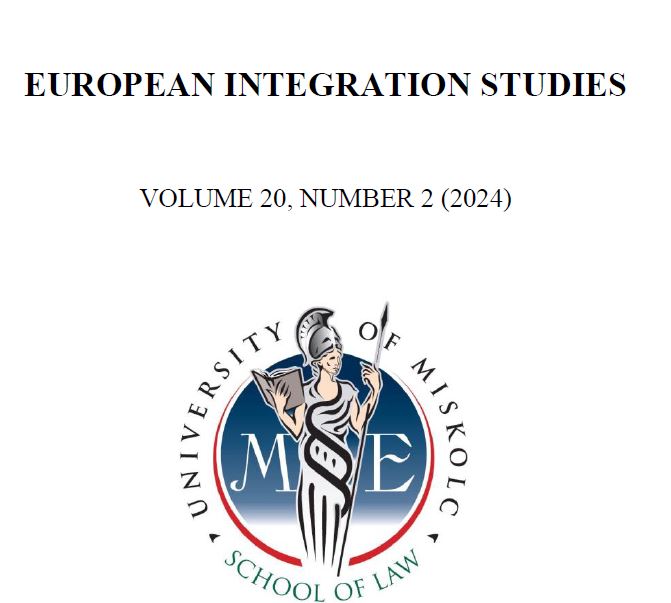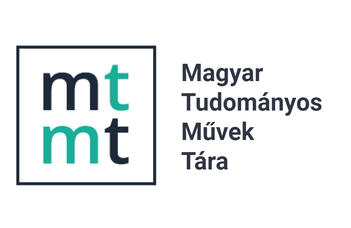Kickstarting the Hungarian defence industry in the 2020s – Synergies, opportunities, and obstacles for smaller member states within EDTIB
DOI:
https://doi.org/10.46941/2024.2.1Keywords:
Hungary, industry, strategy, defence spending, technology, EDTIB.Abstract
Since 2016, Hungary has embarked upon developing its national defence industrial capacities as part of a comprehensive homeland defence and armed forces modernisation programme. Once underfinanced and degraded, with minimal capacity remaining, the national defence technology and industrial base have been reorganised and developed over the past decade as an integral part of the defence modernisation programme. Meaningful production, research, and development capacities have been developed in close cooperation with Tier-1 European (particularly German) defence industry firms, with a focus on regionalisation; cooperation with Turkish, Austrian, and Czech firms; and various joint ventures. Relying on the opportunities offered by European cooperation initiatives (both within the EU and NATO), these projects aim to tie Hungarian and joint ventures to the European Defence Technological and Industrial Base, as well as to make use of joint technology development and available resources for multinational cooperation. Based on the thorough assessment of primary sources (strategic documents, expenditure data) and secondary literature (expert analyses and media reports) this paper provides an overview of these processes. The goal of the paper is to assess the synergies, opportunities, and obstacles for developing the Hungarian defence industry in the 2020s, presenting the lessons learned to its European allies. The conclusions of the research show that kick-starting a rapid, large-scale industrialisation and modernisation programme with an innovation edge by the early 2030s is a ‘high risk – high reward’ strategy. This ambitious goal is supported by sizeable midterm procurement programmes driven forward by a record-breaking defence budget; redesigned institutional, legal, and innovation frameworks; and an integrated long-term national industry development programme. Still, sustaining high-level investment, providing skilled and qualified workforce, and developing innovative capacities remain the most crucial pillars of developing the Hungarian defence industry.
References
Budavári, K. (2021) ‘A magyar védelmi ipar helyzete és fejlődési lehetőségei’ [The current situation and development prospects of the Hungarian defense industry], Budapest: Magyar Hadtudományi Társaság.
Csiki Varga T. (2023) ‘A honvédelmi ágazat 2023-as rekord költségvetése és a NATO-kötelezettségek teljesítése’ [The 2023 record expenditure of the defense sphere and the fufilment of NATO commitments] Stratégiai Védelmi Kutató Központ (Elemzések), 2023/1, pp. 1-9.
Csiki Varga, T., Lázár, Zs. (2021) ‘Filling the two percent gap – An update on Hungarian defense spending trends’ Stratégiai Védelmi Kutató Központ (Elemzések), 2021/15, pp. 1-7.
Csiki Varga, T., Tálas, P. (2020) ‘Magyarország új Nemzeti Biztonsági Stratégiája’ [The new National Security Strategy of Hungary], Nemzet és Biztonság – Biztonságpolitikai Szemle, 13(3), pp. 89–112; https://doi.org/10.32576/nb.2020.3.7.
Guttray, L., (2018) ‘Biztonságpiac Évkönyv’. [Yearbook of the security market], Budapest: Biztonságpiac.hu Kft.
Hecker, F. (2022) ‘Magyarországot választhatja a NATO’ [NATO may choose Hungary], [Online]. Available at: https://www.vg.hu/vilaggazdasag-magyar-gazdasag/2022/01/magyarorszagot-valaszthatja-a-nato (Accessed: 20 April 2024).
Huszák, D. (2023) ‘Hamarosan Magyarországon gyárthatják Európa legmodernebb tankját’ [Soon Europe’s most modern main battle tank may start production in Hungary], [Online]. Available at: https://www.portfolio.hu/global/20230830/hamarosan-magyarorszagon-gyarthatjak-europa-legmodernebb-tankjat-megvalaszoltuk-a-3-legegetobb-kerdest-636099 (Accessed: 20 April 2024).
Márkus, F. (2013) ‘A kötelékben lévő lövészzászlóalj szervezeti és technikai korszerűsítésének lehetőségei a XXI. század elején’ [The possibilities of institutional and technological modernization of an infantry battalion in the beginning of the 21st century], Seregszemle, 11(4), pp. 30–33.
Nádudvari, A., Etl, A., Bereczky, N. (2020) ’Quo vadis, Pesco? An analysis of cooperative networks and capability development priorities’ Stratégiai Védelmi Kutató Központ (Elemzések), 2020/15, pp. 1-27.
Szloszjár, B. (2017) ‘Az integrált modell. A dandárképesség jövője – Mennyiség vagy minőség?’ [The integrated model. The future capabilities of the brigade – Quantity of quality?], Honvédségi Szemle, 145(5), pp. 26–45.
Sticz, L., Seprődi-Kiss, Á. (2020) ‘A Magyar Honvédség képességfejlesztése, egy korszerű haderő megteremtése’ [Developing the capabilities of the Hungarian Defense Forces, creating a modern armed force], Hadtudomány, 30(4), pp. 3–19; https://doi.org/10.17047/Hadtud.2020.30.4.3.
Ternovácz, Á. (2021) ’Egységes holdingba tömörül a magyar hadiipar’ [Hungarian defense industry becomes united under one holding], [Online]. Available at: https://magyarnemzet.hu/belfold/2021/12/egyseges-holdingba-tomorul-a-magyar-hadiipar (Accessed: 15 April 2024).
Végvári, Zs. (2023) ‘Defense innovation in focus’, Military Technology, Special Issue 2023, pp. 74–77.
Budapest Főváros Kormányhivatala (2019) ‘Tájékoztató a Haditechnikai és Exportellenőrzési Osztályok tevékenységéről’ [Report on the activities of the Departments of Defense Industry and Exports Control], [Online]. Available at: https://www.sipri.org/sites/default/files/2021-11/hun_2019.pdf (Accessed: 20 April 2024).
Defense Industry Association of Hungary (2023) Hungarian Defense Industry 2023, pp. 184–185.
European Commission (2022) ‘European Defense Fund 2021 Calls for Proposals – Results’, [Online]. Available at: https://defence-industry-space.ec.europa.eu/funding-and-grants/calls-proposals/european-defence-fund-2021-calls-proposals-results_en (Accessed: 20 May 2024).
European Commission (2023) ‘European Innovation Scoreboard’, [Online]. Available at: https://op.europa.eu/o/opportal-service/download-handler?identifier=04797497-25de-11ee-a2d3-01aa75ed71a1 (Accessed: 20 May 2024).
European Commission (2024a), ‘Results of the EDF 2023 Call for Proposals’, [Online]. Available at: https://defence-industry-space.ec.europa.eu/funding-opportunities-0/calls-proposals/results-edf-2023-calls-proposals_en (Accessed: 20 May 2024).
European Commission (2024b), ‘ASAP results: Boosting ammunitions production’, [Online]. Available at: https://defence-industry-space
NATO (2024) ‘Defense expenditure of NATO countries (2014-2023)’, [Online]. Available at: https://www.nato.int/cps/en/natohq/news_223304.htm (Accessed: 15 April 2024).





